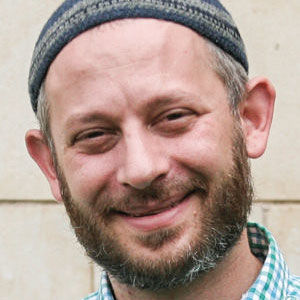Teach, learn Torah in radically accessible places
Published February 13, 2020
D’VAR TORAH — Parashat Yitro
As a Jewish educator, it is not uncommon to think about or to discuss with colleagues what it is specifically that make Jewish education Jewish. Is it the “chosen” content or the identity/ideology of the teacher? Are there particular practices that tend to characterize Jewish education across denominational, ethnic, historical or regional differences?
In short what does it mean for a person to learn or to teach Jewish-ly?
ADVERTISEMENT
Parashat Yitro contains what some scholars of our tradition consider to be the archetypical Jewish education moment. This week, we learn about how the Israelites received Torah. The means by which revelation and learning occur carry hints as to some of the particular characteristics of Jewish learning.
Exodus 20:15 describes the scene at Mount Sinai: “Now the entire people were seeing the thunder sounds, the torches, the shofar sound and the mountain smoking; when the people saw, they trembled and stood up at a distance.”
Perhaps a close read and unpacking of this verse can help us to understand how Jewish education can look. The Israelites, while standing together as a people, each saw sounds: the sounds of thunder and of shofar. In this moment, they lived phenomena that short-circuited and united their sensory experiences within the body of each individual.
All of them were moved by the experience, perhaps emotionally as much as physically, moved to trembling. The community of individuals then each stood up in new places from where they had seen the sounds at a distance and consequently with new perspective on Torah and G-d.
If we take this verse’s description of Torah learning as paradigmatic of Jewish education, perhaps we could say that it is communal, multivocal, multimodal, emotionally and physically moving, and simultaneously shifts the perspectives of individuals within a community and causes individuals to stand together.
ADVERTISEMENT
Educators of all generations have recognized that the physical learning environment plays an essential role in learning. According to early rabbis of our tradition, the Holy Blessed One, ever the thoughtful pedagogue, intentionally orchestrated this moment within the most effective possible setting:
“The Torah was given openly, in a public place. For if it were given in Eretz Yisrael, [the Israelites] could say to the nations of the world: You have no portion in it. But it was given openly, in a public place, and all who want to take it may come and take it.” (Mekhilta D’Rabbi Yishma’el 19:2)
May we all merit to learn, to teach and to practice our Judaism within settings that are radically accessible, that challenge our understanding of the ways in which revelation and the natural world work, that move us and cause us to stand together, with new perspectives, as unique individuals.
Rabbi Scott Slarskey is director of Jewish life at Saul Mirowitz Jewish Community School and a member of the St. Louis Rabbinical and Cantorial Association, which coordinates the d’var Torah for the Jewish Light.















